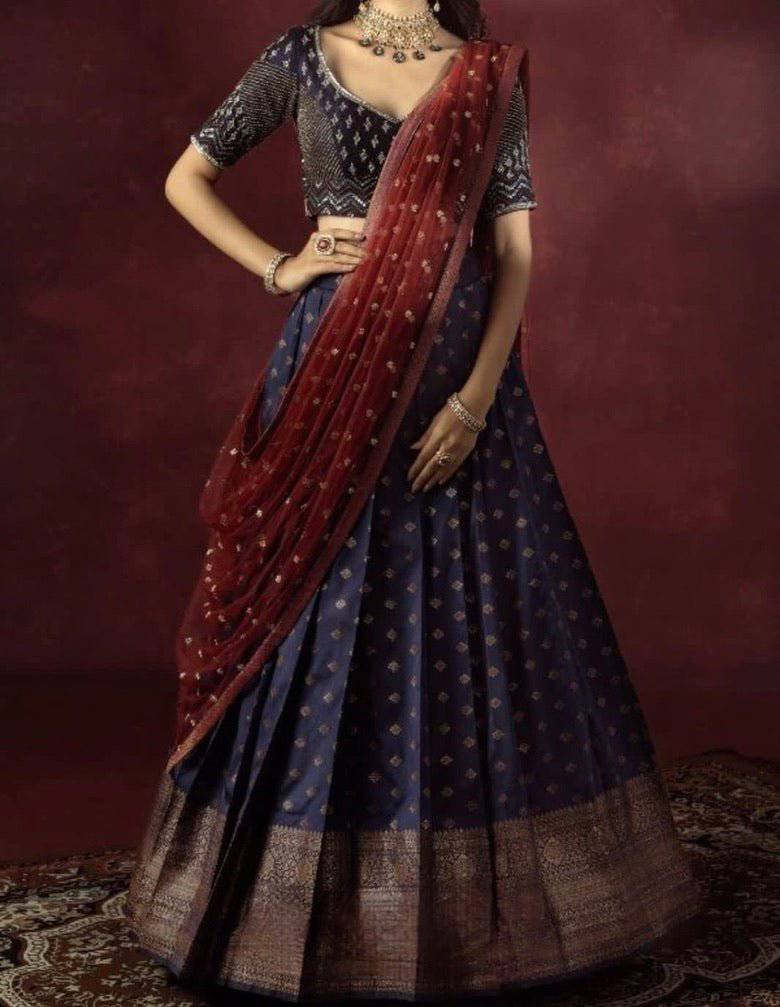
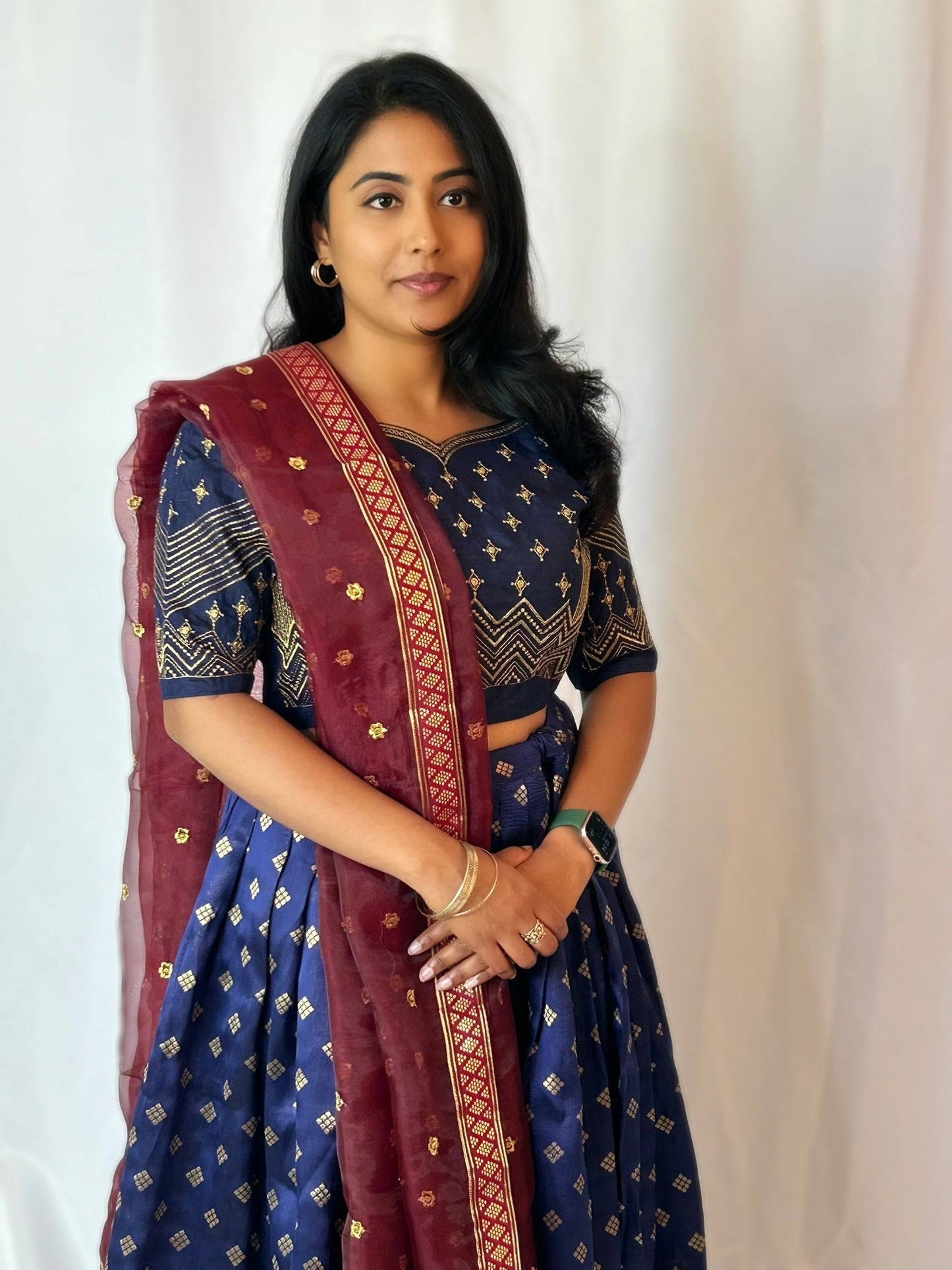
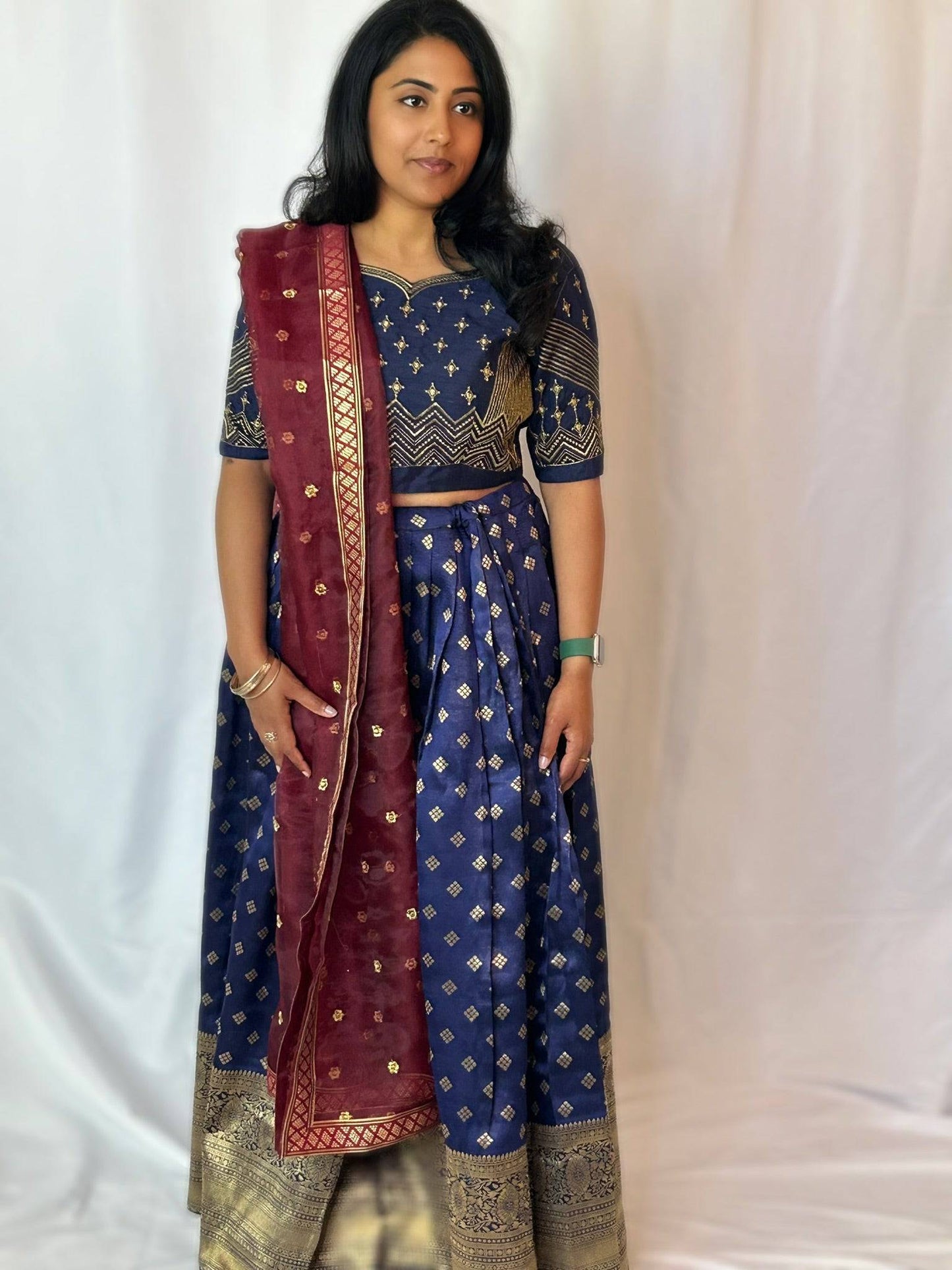
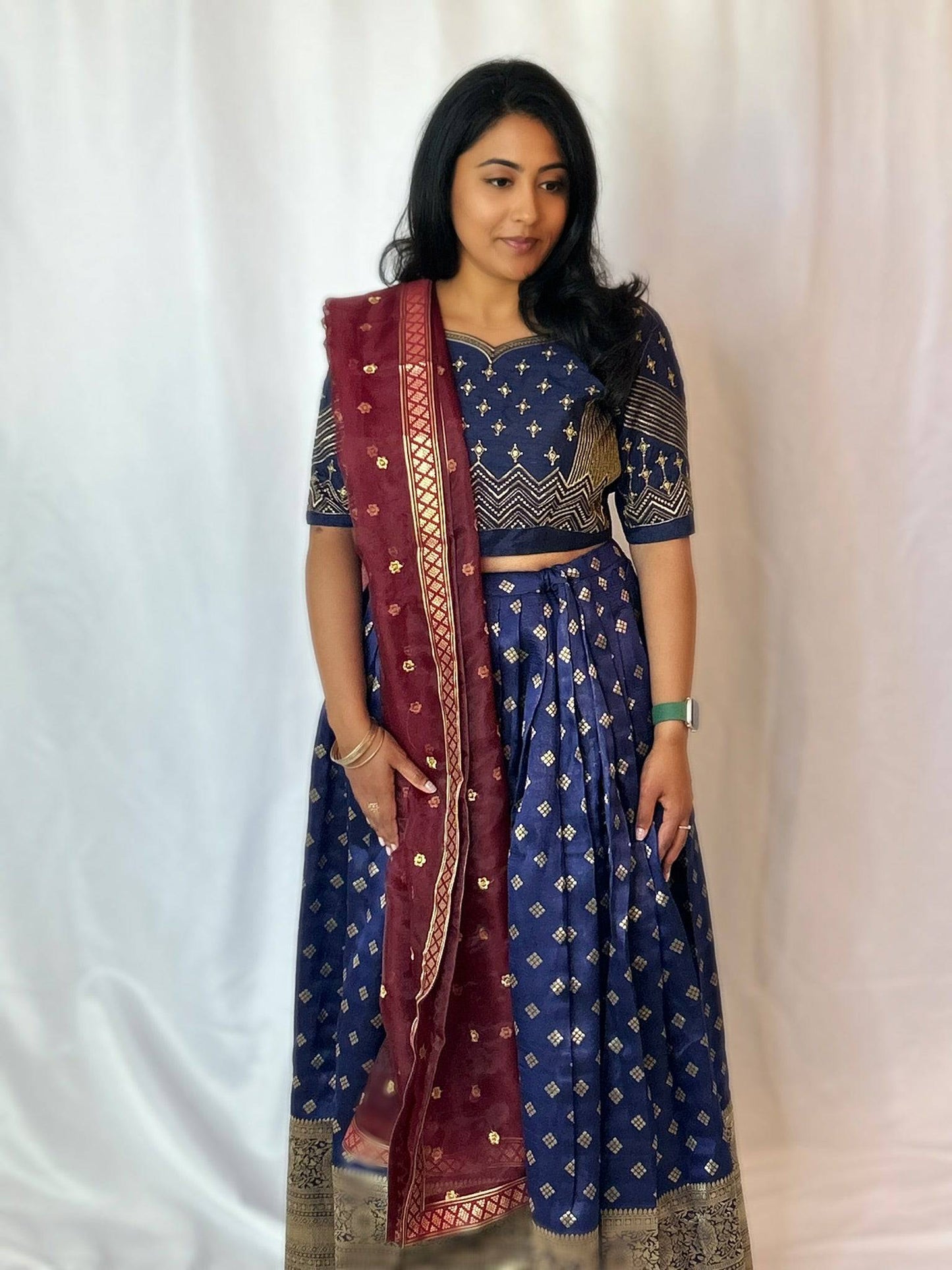


HOW TO WEAR & STYLE
What is a Lehenga?
A lehenga is a traditional Indian outfit that consists of three main components:
Lehenga (Skirt): A long, pleated skirt that is often heavily embellished.
Choli (Blouse): A fitted top that complements the skirt.
Dupatta (Scarf): A long scarf that is draped over the shoulders or head.
How to Wear a Lehenga
Step 1: Wearing the Lehenga
Undergarments: Choose seamless and smooth undergarments that provide good support and avoid visible lines. A well-fitted body shaper can help create a sleek silhouette.
Putting on the Lehenga: Step into the lehenga carefully, ensuring it lies flat. Adjust the waistline to fit comfortably and securely fasten the drawstring or hook.
Length Adjustment: The lehenga should graze the floor, creating an elegant look. However, avoid tripping hazards by ensuring it's not too long.
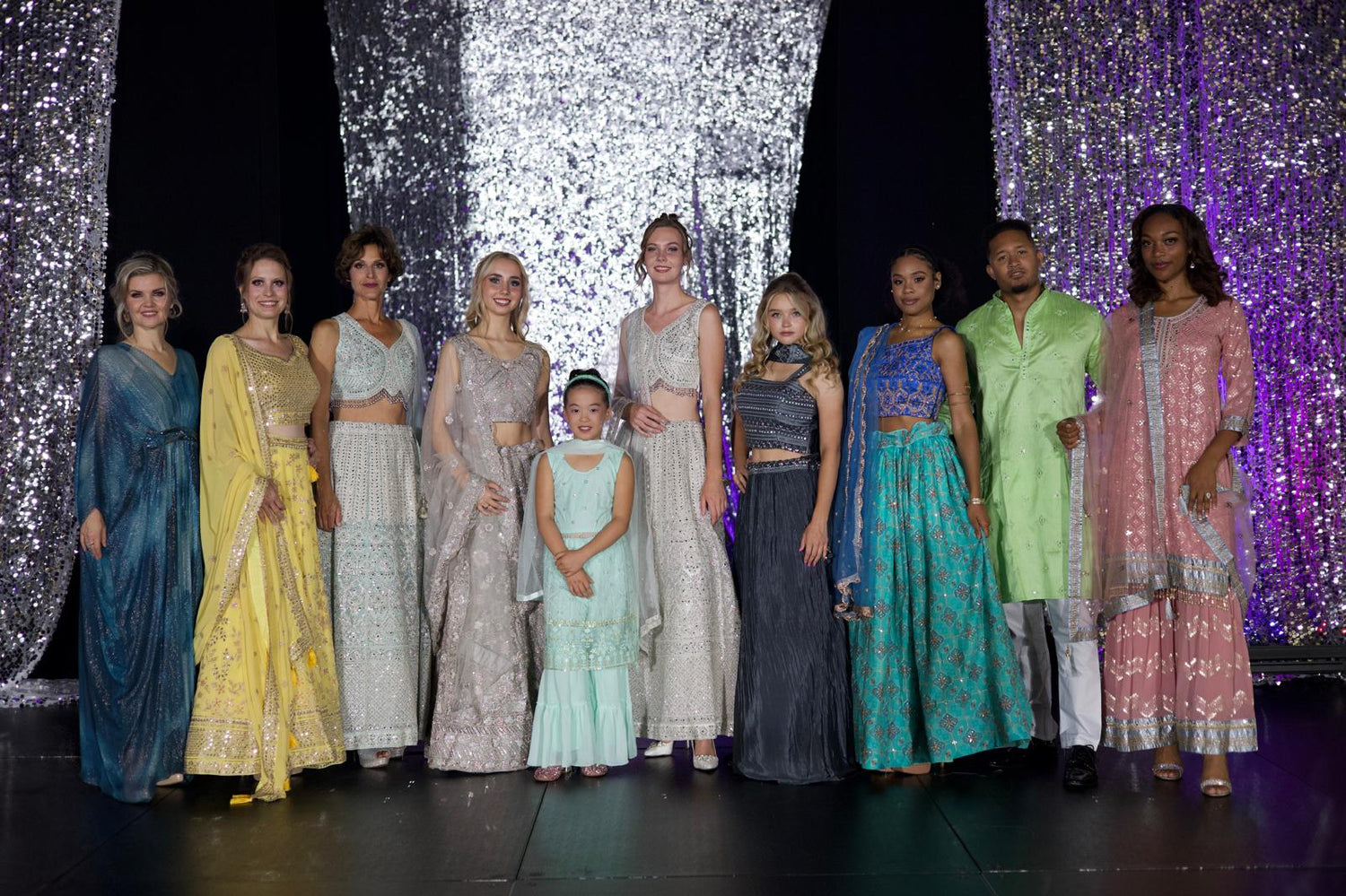
Indian fashion, designed flawlessly to fit American style.
Honor your friend's culture in style with trendy wedding attire that blends tradition and fashion. We've all had that moment of stressing more about what to wear to your friend’s Indian wedding than they are about their big day! But don’t worry—there’s no such thing as being overdressed when it comes to donning a saree, a lehenga, a sharara or a salwar suit. These stunning outfits aren't just about dressing up; they’re about feeling fabulous and celebrating a beautiful culture with elegance and flair
-

FUSION STYLES
TevyHive fuses East and West in style. We only curate styles we'd proudly wear ourselves.
-

SAVE TIME WITH CURATED LIST
Our mission at TevyHive is to save you time with personally curated collections for Indian weddings and parties.
-

STYLIST EXPERIENCE
Handpicked by a stylist with knowledge from India's hidden small street boutiques to top big American brands.
Product FAQ
Ready to Own the Spotlight? Here’s Why Your Perfect Lehenga Awaits!
Is the lehenga appropriate to wear at a wedding?
Weddings in India are often vibrant and celebratory, with many guests wearing ornate, festive outfits. While lehengas are generally acceptable, some specific styles or colors may be reserved for close family members (like the bride's family) or specific wedding functions. It’s worth confirming if the lehenga’s style and level of embellishment fit the occasion and don’t outshine the bridal party.
What colors should I avoid to be respectful?
Traditionally, red is considered the bride’s color, so it's best avoided unless you are closely related to the bride. White and black are also generally avoided, as white is associated with mourning, and black is considered inauspicious in some regions. Instead, opt for rich colors like royal blue, emerald green, or pastels, which are festive and respectful choices for guests.
What style of lehenga should I choose?
Lehengas come in various styles like A-line, flared, mermaid-cut, and panelled. Each style creates a different silhouette, so it’s essential to consider which style would suit your body shape and the occasion. For example, an A-line is more universally flattering, while a mermaid cut is more fitted and formal.
Which fabric is best for my comfort and the occasion?
Lehengas are made in fabrics ranging from heavy silk and velvet to lighter georgette and chiffon. Lighter fabrics are more comfortable and easier to move in, especially if you're new to wearing traditional attire, whereas heavier fabrics give a more opulent look for formal events.
What measurements do I need for the right fit?
Lehenga sizes can vary, so it’s crucial to check for waist, hip, and length measurements, as well as blouse (choli) measurements if it’s included. Many lehengas are semi-stitched, allowing some customization. Make sure to review the size chart and take accurate measurements.
Is the lehenga ready-to-wear or semi-stitched?
Some lehengas come fully stitched, while others are semi-stitched or even unstitched, requiring tailoring. Clarify this to ensure you know whether additional tailoring is needed and to avoid delays if you need it ready by a specific date.




















